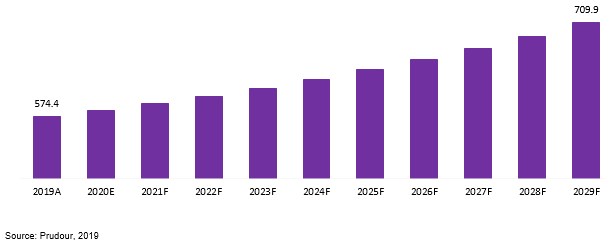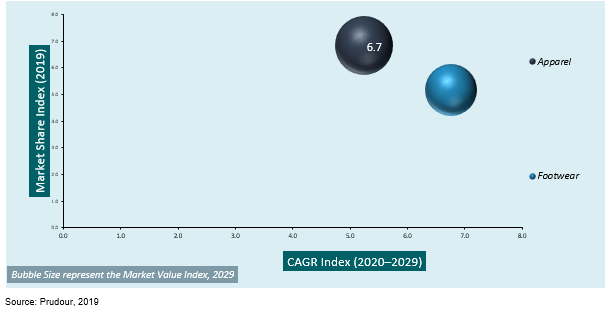Global Canada Tennis Market, by Product Types (Apparel , Footwear , and other ), by Application (Professional, Amateur, and other) and by Region and Companies - Industry Segment Outlook, Market Assessment, Competition Scenario, Trends and Forecast 2022-2032
- Published date: March 2023
- Report ID: 68600
- Number of Pages: 207
- Format:
- keyboard_arrow_up
The Canada tennis Market is projected to be USD 574.4 Mn in 2022 to reach USD 709.9 Mn by 2032 at a CAGR of 2.2%.
Market.us announces publication of its most recently generated research report titled, “Canada Tennis Market by Product (Tennis Apparel and Tennis Footwear), By End-User (Professional and Amateur), and by Region – Global Forecast to 2032.”, which offers a holistic view of the Canada tennis market through systematic segmentation that covers every aspect of the target market.
Tennis is played at all levels of society and by people of all ages. It involves two players or teams of two. It is played on a court using rackets to hit a ball to each other over a net. The game aims to hit the ball over the net. Tennis is either played indoors or outdoors, on a range of surfaces such as grass, concrete, clay, and artificial turf. Increasing events of tennis and growing participation among the youth segment are major factors expected to drive the growth of the Canadian tennis market.
Growing tennis popularity as a fitness sport among individuals in Canada is another factor that is fueling the market growth. Additionally, the presence of better infrastructure, initiatives, as well as funding for tennis sports training across schools and universities taken by Canada government, is expected to drive the growth for the target market.
trending_up Total Revenue in 2018$ 574.4 Mn
trending_up Market CAGR of the Next Ten Years2.2%
no_encryption Market Value (US$ Mn), Share (%) and Growth Rate (%) Comparison 2012-2028Purchase this report or a membership to unlock the market value (US$ Mn), share (%) and growth rate (%) comparison for this industry.- By Type
- By Region
- By Application
no_encryption Leading Companies Financial HighlightsPurchase this report or a membership to unlock the leading companies financial highlights for this industry.trending_up Market Revenue of the Next Ten Years$ 709.9 Mn
Moreover, high spending capacity, coupled with growing awareness regarding health among young generations, which in turn increases demand for various tennis products such as apparel, footwear, and equipment.
However, training costs associated with tennis sports are high, and certain associations have specified the global standards for the manufacturing of various tennis products that may hamper growth of the Canada tennis market in the coming years. Owing to increasing awareness regarding the environmental concern, manufacturers are focusing on producing products which have less or no harmful impact on environment as well as help to take the sport in an eco-friendly direction. Increasing number of cardio tennis activities to deliver calorie-burning and aerobic workout is a key trend observed in the tennis market.
Canada Tennis Market Revenue (US$ Mn), 2019–2029

Canada tennis market is segmented on the basis of product type, end user, and region. On the basis of product type, the market is segmented into apparel and footwear. The apparel segment accounts for the majority share, whereas the footwear segment is expected to register highest growth over forecast period. On the basis of end user, the market is segmented into professional and amateur. The amateur segment accounts for a majority share in the Canada tennis market, followed by the professional segment.
Canada Tennis Market Attractiveness Analysis by Product Type, 2013–2019

The research report on the Canada tennis market includes profiles of some of major companies such as NIKE, Inc., Amer Sports Oyj, Adidas AG, ASICS Corp, Under Armour, Inc., Dunlop Sports Co., Ltd., Bridgestone Corp., Yonex Co., Ltd., Head, Babolat and Authentic Brands Group (Prince Tennis).
Key Market Segments
Type
- Apparel
- Footwear
Application
- Professional
- Amateur
Key Market Players included in the report:
- NIKE Inc.
- Amer Sports Oyj
- Adidas AG
- ASICS Corp
- Under Armour Inc.
- Dunlop Sports Co. Ltd.
- Bridgestone Corp.
- Yonex Co.Ltd.
- Head
- Babolat and Authentic Brands Group (Prince Tennis).

- NIKE Inc.
- Amer Sports Oyj
- Adidas AG
- Asics Corp Company Profile
- Under Armour Inc.
- Dunlop Sports Co. Ltd.
- Bridgestone Corp.
- Yonex Co.Ltd.
- Head
- Babolat and Authentic Brands Group (Prince Tennis).
- settingsSettings
Our Clients
| Single User $4,599 $3,499 USD / per unit save 24% | Multi User $5,999 $4,299 USD / per unit save 28% | Corporate User $7,299 $4,999 USD / per unit save 32% | |
|---|---|---|---|
| e-Access | |||
| Report Library Access | |||
| Data Set (Excel) | |||
| Company Profile Library Access | |||
| Interactive Dashboard | |||
| Free Custumization | No | up to 10 hrs work | up to 30 hrs work |
| Accessibility | 1 User | 2-5 User | Unlimited |
| Analyst Support | up to 20 hrs | up to 40 hrs | up to 50 hrs |
| Benefit | Up to 20% off on next purchase | Up to 25% off on next purchase | Up to 30% off on next purchase |
| Buy Now ($ 3,499) | Buy Now ($ 4,299) | Buy Now ($ 4,999) |










